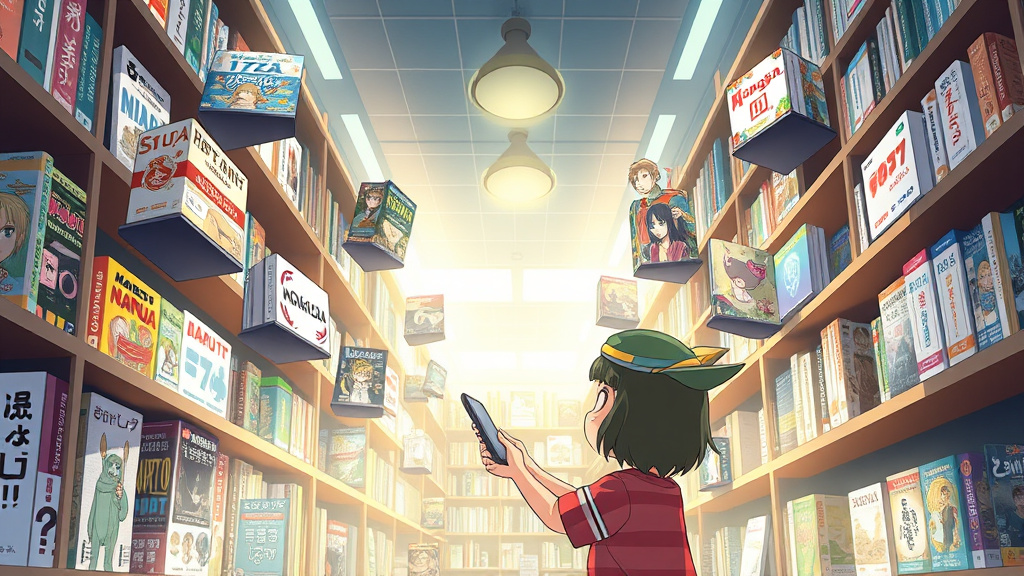japanese in anime & manga serves as the artistic and thematic backbone of these storytelling mediums, blending traditional customs with contemporary narratives. As cultural phenomena, anime and manga are more than just entertainment; they are vivid expressions of Japan's historical, aesthetic, and linguistic identity that resonate globally. This article explores how Japanese heritage influences anime and manga’s artistic styles, themes, and storytelling conventions, offering insights into their enduring appeal and cultural significance beyond Japan’s borders.
The Enduring Appeal of Japanese Culture in Anime and Manga
The enduring appeal of Japanese culture within anime and manga stems from their ability to encapsulate Japan’s rich traditions while seamlessly integrating modern societal issues. These media serve as cultural ambassadors, showcasing everything from ancient ceremonies and folklore to contemporary urban life. The cultural nuances—such as respect for elders, spirituality, and social hierarchy—are woven into complex characters and layered narratives that invite viewers to appreciate Japan’s unique worldview.
Furthermore, anime and manga adeptly adapt traditional symbols and motifs—like cherry blossoms or samurai armor—recontextualizing them for global audiences. This fusion of tradition and innovation creates a captivating aesthetic that is both nostalgically rooted and refreshingly inventive. As a result, international fans not only enjoy compelling stories but also gain nuanced insights into Japanese values and history, fostering cross-cultural appreciation through the vibrant language of animated art and graphic storytelling.
 Hình minh họa: japanese in anime & manga – manga paperback
Hình minh họa: japanese in anime & manga – manga paperbackExploring Japanese Aesthetics and Symbolism in Anime
Japanese aesthetics are deeply embedded in anime, producing a distinctive visual language that emphasizes simplicity, nature, and subtle emotional expression. Elements like "wabi-sabi"—the beauty of imperfection—and minimalist design principles are evident in character designs, backgrounds, and animation styles, creating a tranquil yet dynamic aesthetic. These choices reflect Japanese cultural preferences for understated elegance and an appreciation for transient beauty, often symbolized through motifs such as flowing water, floating leaves, or fleeting cherry blossoms.
Symbolism in anime also manifests profoundly through color schemes, character motifs, and allegorical storytelling. For example, the recurring use of red can symbolize passion or danger, while blue often signifies calmness or melancholy. The deliberate use of space and silence—known as "ma"—enhances emotional depth and tension. These aesthetic choices and symbols layer meaning, offering viewers a rich, sensory experience rooted in Japanese cultural sensibilities that elevate anime beyond mere entertainment into a form of artistic expression deeply connected to national identity.

Narrative Structures: How Japanese Storytelling Influences Anime Tropes
Japanese storytelling, influenced by traditional narrative forms like "monogatari" and "kanshi," shapes the unique narrative structures prevalent in anime. These stories often incorporate cyclical or layered storytelling, emphasizing themes of redemption, perseverance, and the interconnectedness of characters and worlds. For instance, the concept of "fate" or "destiny" is woven into many plotlines, reflective of Japan’s philosophical outlook and acceptance of life's impermanence.
Anime tropes such as the "power of friendship," coming-of-age journeys, and the hero's internal struggle are directly influenced by Japanese storytelling traditions—highlighting resilience and societal harmony. These tropes are not mere clichés but are deeply rooted in Japanese cultural values, which prioritize harmony, community, and personal growth. The way these narratives are structured—often blending humor with tragedy—mirrors Japan’s nuanced approach to storytelling, making anime resonate emotionally while offering layered, culturally rich plotlines.
The Evolution of Japanese Art Styles in Manga
Manga’s evolution showcases a fascinating journey through Japanese art styles, reflecting shifting cultural trends and technological innovations. From the detailed, realistic line work of early post-war manga to the highly stylized, exaggerated character expressions in contemporary works, manga art continually adapts without losing its essence. Artists like Osamu Tezuka pioneered expressive, dynamic characters that balance traditional Japanese aesthetics with Western comic influences, setting the stage for modern genre-specific styles.
Today, manga incorporates a broad spectrum of art styles—ranging from minimalist, abstract lines to hyper-detailed fantasy worlds. The evolution encapsulates Japan's ability to merge the old with the new: traditional ink brush strokes coexist with digital techniques, creating a visual dialogue between history and modernity. This continuous innovation not only enriches storytelling but also reflects societal changes, from post-war rebuilding to contemporary global influence, making manga a mirror of Japan’s dynamic cultural identity.
From Samurai to Salarymen: Depicting Japanese Society in Anime
Anime’s portrayal of Japanese society offers a kaleidoscope of its historical and social transformations, from feudal samurai tales to modern-day salarymen. Classic samurai anime evoke a sense of nostalgia for Japan’s warrior past, emphasizing virtues like honor and loyalty. Conversely, contemporary anime often depict urban working-class struggles, corporate culture, and youth rebellion, illustrating the nation’s rapid modernization and global integration.
This spectrum captures Japan’s societal evolution—highlighting conflicts between tradition and modernity, individualism and collectivism. Showcasing diverse archetypes and settings reflects the layered complexities of Japanese identity, where respect for tradition coexists with the pressures and aspirations of current society. Through nuanced storytelling, anime becomes a cultural mirror, offering insights into Japan’s ongoing negotiation between its storied heritage and contemporary realities.
Linguistic Nuances: The Role of Japanese Language in Anime Dialogue
The Japanese language’s rich phonetics and formalities significantly influence anime dialogue, serving as a cultural marker that enhances character development and thematic depth. Honorifics, speech levels, and idiomatic expressions encode social hierarchies, personality traits, and emotional states, adding layers of meaning that resonate with Japanese cultural norms. For example, the distinction between formal "keigo" and informal speech helps depict relationships, status, and intimacy among characters.
Moreover, the unique linguistic structure—such as onomatopoeia and wordplay—adds a lyrical, poetic quality to dialogue. These nuances often pose a challenge for international translation but serve as authentic reflections of Japanese social interaction and worldview. The language’s role in anime dialogue underscores how deeply the Japanese in anime & manga are intertwined with linguistic traditions, enriching storytelling with cultural specificity and emotional authenticity.
Mythology and Folklore: The Spiritual Backbone of Japanese Anime
Japanese mythology and folklore invigorate anime with a spiritual and mystical dimension that connects modern narratives to ancient beliefs. Deities from Shinto and Buddhist traditions, legendary creatures like kitsune and tengu, and stories of spirits or yūrei permeate many anime, providing allegories for human virtues, fears, and beliefs. These elements often serve as symbolic backdrops that deepen the narrative and imbue it with cultural resonance.
This spiritual backbone offers audiences a window into Japan’s collective consciousness, illustrating how mythological symbols continue to influence contemporary culture. Films and series such as "Natsume’s Book of Friends" or "Spirited Away" showcase how folklore can be reimagined, blending spiritual symbolism with emotional storytelling. The integration of mythology into anime exemplifies Japan’s enduring cultural heritage, where ancient spiritual beliefs shape modern storytelling in compelling and meaningful ways.
Food and Fandom: The Culinary Representations of Japan in Manga
Cuisine plays an essential role in defining Japanese identity within anime and manga, serving both as a cultural symbol and a narrative device. From the meticulous depiction of traditional dishes like sushi, ramen, and bento to the symbolic significance of shared meals, Japanese food reflects social customs, regional diversity, and historical continuity. Food scenes often foster character development, intimacy, and cultural authenticity, making the narrative more visceral and relatable.
Beyond storytelling, culinary elements foster fandom by inspiring real-world culinary exploration and appreciation of Japanese cuisine worldwide. Manga such as "Shokugeki no Soma" or the delicately illustrated "Oishinbo" celebrate cooking as an art form rooted in cultural heritage. These representations not only satisfy aesthetic and sensory desires but also act as cultural ambassadors, transmitting Japan’s culinary traditions across borders and reinforcing the country’s embedment of food within its cultural fabric.
Modern Japan Through the Lens of Anime: Social Commentary and Reflection
Anime serves as a mirror reflecting the social, political, and economic realities of modern Japan. It tackles urban isolation, technological dependence, gender roles, and environmental concerns, often using allegorical narratives that resonate worldwide. For example, cyberpunk series like "Ghost in the Shell" critique technological advancement, while slice-of-life shows explore everyday struggles, offering social critique wrapped in engaging stories.
By doing so, anime offers a nuanced commentary on Japan’s rapid modernization and cultural shifts, addressing both progress and its discontents. These narratives highlight the tension between tradition and innovation, individualism and societal expectations. The reflective capacity of anime makes it not just entertainment but an insightful lens into the complex evolution of Japanese society, capturing its hopes, anxieties, and contradictions in a uniquely artistic form rooted in the Japanese in anime & manga tradition.
The Global Impact of Japanese Cultural Elements in Anime and Manga
The global influence of Japanese cultural elements in anime and manga has created an intricate web of cultural exchange. Iconic symbols—such as samurai, ninja, and kimono—have become universally recognizable emblems of Japan’s rich heritage. As fans worldwide embrace these cultural symbols, they foster a deeper appreciation and curiosity about Japan’s history, language, and traditions.
This cultural export has also inspired countless creators around the world to incorporate Japanese aesthetics and storytelling techniques into their work, leading to a cross-pollination of ideas. The international success of anime and manga highlights how Japanese in anime & manga has transcended its roots to shape a global cultural landscape, where East meets West in a vibrant, imaginative dialogue. This phenomenon not only promotes cultural understanding but also elevates Japan’s artistic influence across diverse creative industries worldwide.
Conclusion
Japanese in anime & manga exemplifies how cultural heritage, artistic expression, and societal values are intricately woven into modern visual storytelling. From exploring traditional aesthetics and mythologies to reflecting contemporary societal issues, anime and manga serve as powerful mediums that celebrate and transmit Japan’s cultural identity to a global audience. As these art forms continue to evolve, they sustain a dynamic dialogue between Japan’s past and present, reinforcing their universal appeal and cultural depth. The ongoing influence of Japanese culture in anime and manga underscores their role as modern vessels of cultural preservation and innovation, captivating audiences worldwide through their unique blend of tradition and modernity.





